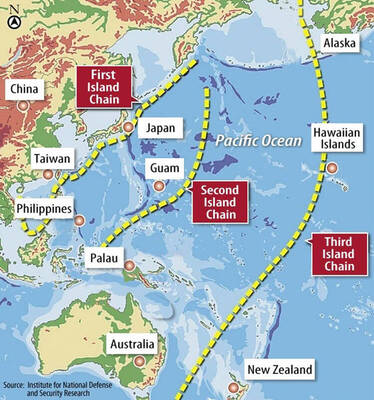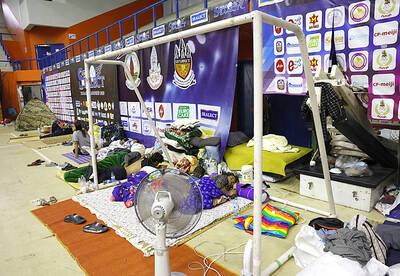There are seven stages of grief: shock, denial, anger, bargaining depression, testing and acceptance. But with the Xbox 360, which has been giving a significant number of its owners grief, Microsoft last week moved directly from the first stages to the last -- from denying any problems with it to admitting a US$1 billion problem that potentially affects all 11.6 million consoles sold so far.
Three weeks ago Todd Holmdahl, vice president of the gaming and Xbox products group, said repeated problems where people had to take back up to 11 consoles came from "a vocal minority" (tinyurl.com/yqtm4w) and dismissed suggestion of endemic problems.
Then last week Microsoft abruptly announced that it would set aside between US$1.05 billion and US$1.15 billion, charged against the just-finished 2007 fiscal year, to cover the costs of extending the warranty for every machine from one to three years, and to fix the many which show the "red ring of death" -- three red lights on the front panel control ring, indicating a general hardware failure.
How many? Unfortunately, Microsoft still isn't ready to deal with that issue.
PS3 surge
"When you look at the financial implication, obviously it's not a small number," said Robbie Bach, president of its entertainment and devices unit.
Sony, which last week had denied it would cut the price of its struggling PlayStation 3, saw an opening and snipped US$100 off the US retail price, prompting a surge in sales there.
Microsoft repeatedly declined to talk to me about precisely what problems the failed consoles suffer from. However, Peter Moore, head of the Xbox division, told Gamesindustry.biz: "There are a lot of different issues that eventually could all combine to create the three flashing red rings that appear on the power button on the console; no [one] specific issue."
He was repeatedly evasive in interviews, leaving the impression that the problems were either profound -- or embarrassingly simple.
The financial problems, though, are stark. The sum being set aside amounts to between US$90 and US$99 for every console sold -- extra loss on machines that are already sold at a loss. On its launch, analysts reckoned that each Xbox contained US$525 worth of components; but the machine sold for, at most, US$499, and more price cuts are rumored to be on the way to keep ahead of Sony. On average, Microsoft took a US$126 loss on each console sold at its starting price -- US$1.4 billion so far.
The billion-dollar figure also indicates that Microsoft's repeated insistence that the failure rate was about average for such hardware -- that is, between 3 percent and 5 percent -- cannot have been true. The real failure rate is probably about five times greater than the company has admitted, which would put repair costs at between US$330 and US$660 per console. At that upper limit, it would be cheaper for Microsoft simply to send a cheque for a brand new console. So what are the causes?
overheating
Owners and analysts have made their own investigations. The most obvious suggestion is that parts overheat; the Xbox 360 draws 160 watts, which has to be dissipated via two large heatsinks and two fans. One suggestion is that when the machine gets hot, the motherboard warps and pushes the graphics processing unit (GPU) off its board. Another is that some of the soldering is imperfect and so cracks at high temperature. A Microsoft support document (tinyurl.com/2qnefa) also suggests, improbably, that surge protectors and extension strips contribute to the problem by preventing the current surge needed for the fans to turn on; this seems unlikely, since that surge would be too small to trip them.
In desperation, some owners have turned to home-grown cures, including wrapping a towel around the machine, blocking the fan vents. This may -- depending who you believe -- either cause the solder to reflow or the GPU to reseat. (Microsoft has not commented.) The fixes sometimes work, at least temporarily.
We can deduce some of the reasons from the fact that Microsoft is declaring that the problems are sorted out -- just as it is moving from 90-nanometer to 65nm chips, which should reduce its power consumption significantly, and using a two-part heat sink in the new designs.
The key question though is whether these flaws will put off future customers, and how badly they have annoyed existing ones. The principal problem for the latter is that any content bought online must be re-enabled for a replacement console.
dream over?
Does the admission mean that Microsoft's dream that the Xbox will form the centerpiece of a strategy to put Microsoft software and hardware into everyone's living room has been permanently sunk?
A report this week from Jupiter Research suggests that there is now everything to play for.
"Jupiter Research anticipates the competitive field will be much closer than in the past; at the end of the current [console] cycle in 2012, the range in market shares is projected to be just under 10 percent compared with the 33 percent range in market shares at the end of the last cycle in 2005. Then, the PS2 dominated, and Nintendo was nowhere. Now, Nintendo's Wii is rocketing towards the Xbox 360 total; sales data suggests it is selling nearly three times faster than the Xbox 360 or PS3," the report said.
The optimistic forecast -- written before the Xbox's problems were admitted -- suggests that the Xbox will continue to sell. Moore repeated his insistence that the Xbox division will move into profit next year; having shovelled the billion-dollar faults back into the last fiscal year, it can look for profits from its online service, peripherals and games. The strategy remains untouched. All that has changed is the time it will take to pay back. But Microsoft is prepared to play the longest of games -- even when it has no chance of winning.

The US government has signed defense cooperation agreements with Japan and the Philippines to boost the deterrence capabilities of countries in the first island chain, a report by the National Security Bureau (NSB) showed. The main countries on the first island chain include the two nations and Taiwan. The bureau is to present the report at a meeting of the legislature’s Foreign Affairs and National Defense Committee tomorrow. The US military has deployed Typhon missile systems to Japan’s Yamaguchi Prefecture and Zambales province in the Philippines during their joint military exercises. It has also installed NMESIS anti-ship systems in Japan’s Okinawa

‘WIN-WIN’: The Philippines, and central and eastern European countries are important potential drone cooperation partners, Minister of Foreign Affairs Lin Chia-lung said Minister of Foreign Affairs Lin Chia-lung (林佳龍) in an interview published yesterday confirmed that there are joint ventures between Taiwan and Poland in the drone industry. Lin made the remark in an exclusive interview with the Chinese-language Liberty Times (the Taipei Times’ sister paper). The government-backed Taiwan Excellence Drone International Business Opportunities Alliance and the Polish Chamber of Unmanned Systems on Wednesday last week signed a memorandum of understanding in Poland to develop a “non-China” supply chain for drones and work together on key technologies. Asked if Taiwan prioritized Poland among central and eastern European countries in drone collaboration, Lin

The Chien Feng IV (勁蜂, Mighty Hornet) loitering munition is on track to enter flight tests next month in connection with potential adoption by Taiwanese and US armed forces, a government source said yesterday. The kamikaze drone, which boasts a range of 1,000km, debuted at the Taipei Aerospace and Defense Technology Exhibition in September, the official said on condition of anonymity. The Chungshan Institute of Science and Technology and US-based Kratos Defense jointly developed the platform by leveraging the engine and airframe of the latter’s MQM-178 Firejet target drone, they said. The uncrewed aerial vehicle is designed to utilize an artificial intelligence computer

Renewed border fighting between Thailand and Cambodia showed no signs of abating yesterday, leaving hundreds of thousands of displaced people in both countries living in strained conditions as more flooded into temporary shelters. Reporters on the Thai side of the border heard sounds of outgoing, indirect fire yesterday. About 400,000 people have been evacuated from affected areas in Thailand and about 700 schools closed while fighting was ongoing in four border provinces, said Thai Rear Admiral Surasant Kongsiri, a spokesman for the military. Cambodia evacuated more than 127,000 villagers and closed hundreds of schools, the Thai Ministry of Defense said. Thailand’s military announced that